Let's get active and try Double Whammy!
With the Double Whammy activity you can develop the following skills:
- Aim and accuracy
- Coordination and fluency
- Rhythm and timing
- Focus and concentration
This resource is suitable for Physical Education and activity for P2, P3, P4, P5, P6 and P7 (First and Second Level Curriculum for Excellence).
Watch this
Learn how to take part in the Double Whammy activity with help from primary school teacher, Danny Denholm, and wheelchair athlete, Gemma Lumsdaine.
DANNY: Hey, I'm Danny, and welcome to Let's do this, where we will be getting active together.
This activity is called the Double Whammy. This is an excellent game, which will develop your coordination, fluency and communication skills.
You will need a partner, two balls or two balloons.
I've got wheelchair athlete, Gemma here, to help me show you how to do it.
DANNY: Step one, sit facing your partner about one metre apart with a ball each.
GEMMA: Step two, on the count of three, each person will roll or throw the ball towards the other partner.
DANNY: Step three, as soon as each person has caught the ball, do it again. Let's do this!
NARRATOR: Too tough?
DANNY: Finding this too tricky? That's okay. Make the distance between you and your partner longer giving you more time to catch.
GEMMA: You could even change the balls to balloons, giving you more time to react.
NARRATOR: Go up a notch?
DANNY: To help develop your skills, reduce the distance between you and your partner, giving you less time to react, or you could use a smaller ball.
GEMMA: Facing your partner, bring in other methods, such as bouncing, different types of throws, or adding a clap in before you catch the ball.
DANNY: You could even add in your number skills by reciting times tables or counting patterns whilst completing the task. The choice is up to you.
NARRATOR: Gemma's challenge.
GEMMA: Okay, something I want you to try for me. Continuously roll and catch for a set time of your choosing.
So, for example, give yourself 30 seconds, and count how many you can get.
Record your scores on a whiteboard or pen and paper. What will your best score be?
NARRATOR: Final thoughts.
DANNY: Come on, give this a go! With practice and repetition, you will improve.
Can you think of any activities where you might put these rolling or throwing skills to good use?
NARRATOR: Let's do this!
What you need
| Equipment | Alternatives |
|---|---|
| Two balls | Balled-up socks or balloons |
Try it yourself
Follow these step-by-step instructions and give it a go!
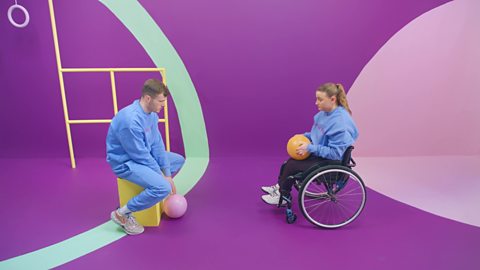
Image caption, Face your partner
Start the game by facing your partner about one metre apart. You should each have a ball to throw or roll.
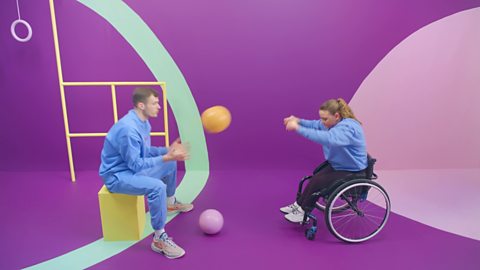
Image caption, Roll or throw
On the count of three, each person will roll or throw the ball at the same time.
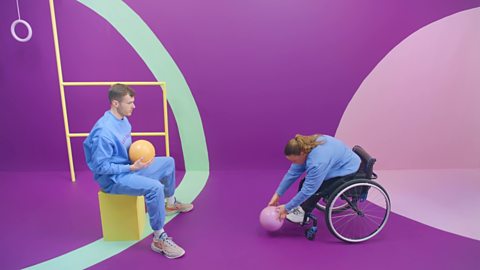
Image caption, Catch
You and your partner should try and catch the ball coming in the opposite direction.
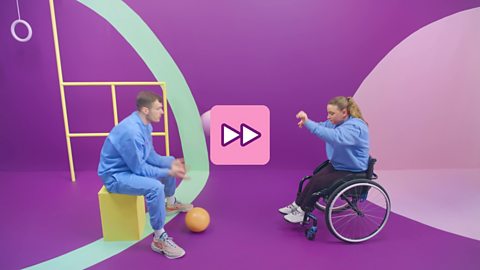
Image caption, Repeat
As soon as each person has caught the ball, roll or throw and catch the balls again.
1 of 4
Don't have a partner?
If you want to practise this on your own, sit facing a wall and use a ball that will bounce back to you.
How was Double Whammy for you?
We are all unique and have different strengths and skills. Some of us may find some skills easier than others but we can all develop and improve.
You can adapt the Double Whammy activity to suit your needs. If we practise our skills regularly, we can improve and progress over time.
Too tough?
If you find the Double Whammy too challenging, don't worry!
Try these tips to make the activity a bit easier.
- Make the distance between you and your partner longer. This gives you more time to catch the ball.
- Change the balls to balloons to give you more time to react.
Go up a notch?
It's great to look at ways to develop our skills and we can do this by challenging ourselves.
If you enjoyed the Double Whammy but are looking for a bigger challenge, try these tips to make it even harder.
- Decrease the distance between you and your partner.
- Use a smaller ball.
- Facing your partner, bring in other methods such as bouncing the ball instead of rolling or throwing it.
- Clap before catching the ball.
- Practise your numeracy skills. Recite times tables or a number pattern whilst completing the activity.
Gemma's challenge
- Continuously throw/roll and catch for a set time. For example, time yourselves for 30 seconds or 1 minute.
- Count how many throws/rolls and catches you manage in the set time.
- Record your score then try to beat it next time!
Time to reflect
Enjoyment
The most important part of physical activity and movement is that you enjoy it. We all need to stay active in our daily lives in order to stay healthy. It’s a lot easier if you’re having fun.
After you’ve taken part in this activity, take some time to think about what you enjoyed and how you might approach the activity differently next time.
- What did you enjoy about this activity? How could you do more of this?
- What did you dislike about this activity? What would make it better?
- What would you do differently next time?
Developing your skills
The skills you’ve worked on in this activity are useful in other parts of your daily life and in sport.
Can you think of any activities or sports where you might use these skills?
The skills you've developed in this activity could help with:
- catching any object someone throws at you
- serving a ball to your partner in tennis
- throwing the ball close to the target in boccia
Physical activity skills. listPhysical activity skills
Learn more about the different skills you've developed in this activity and how we use them in daily life.
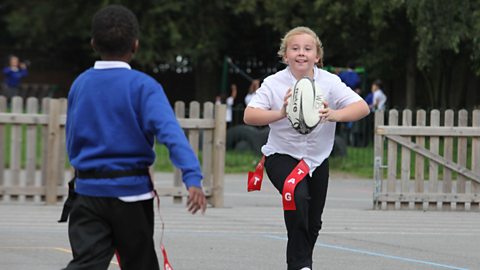
Wheelchair Basketball Lesson with Robyn Love. videoWheelchair Basketball Lesson with Robyn Love
Paralympian Robyn Love guides us through some wheelchair basketball drills.

Rugby League World Cup
Four reasons to follow the Wheelchair Rugby League tournament
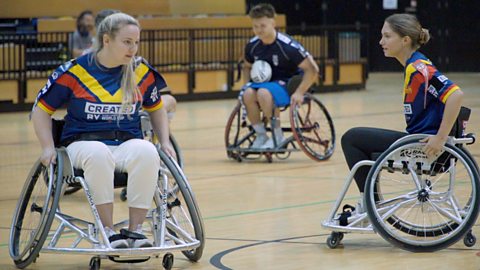
More on Physical activity
Find out more by working through a topic
- count4 of 18
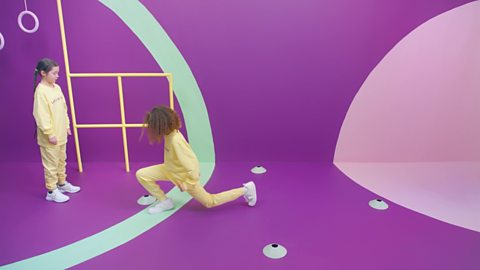
- count5 of 18
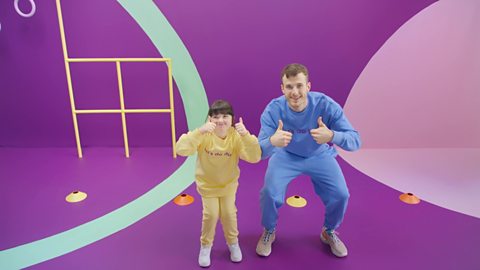
- count6 of 18
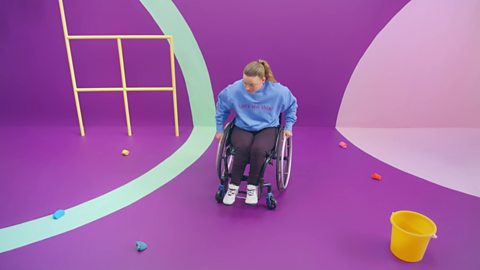
- count7 of 18

